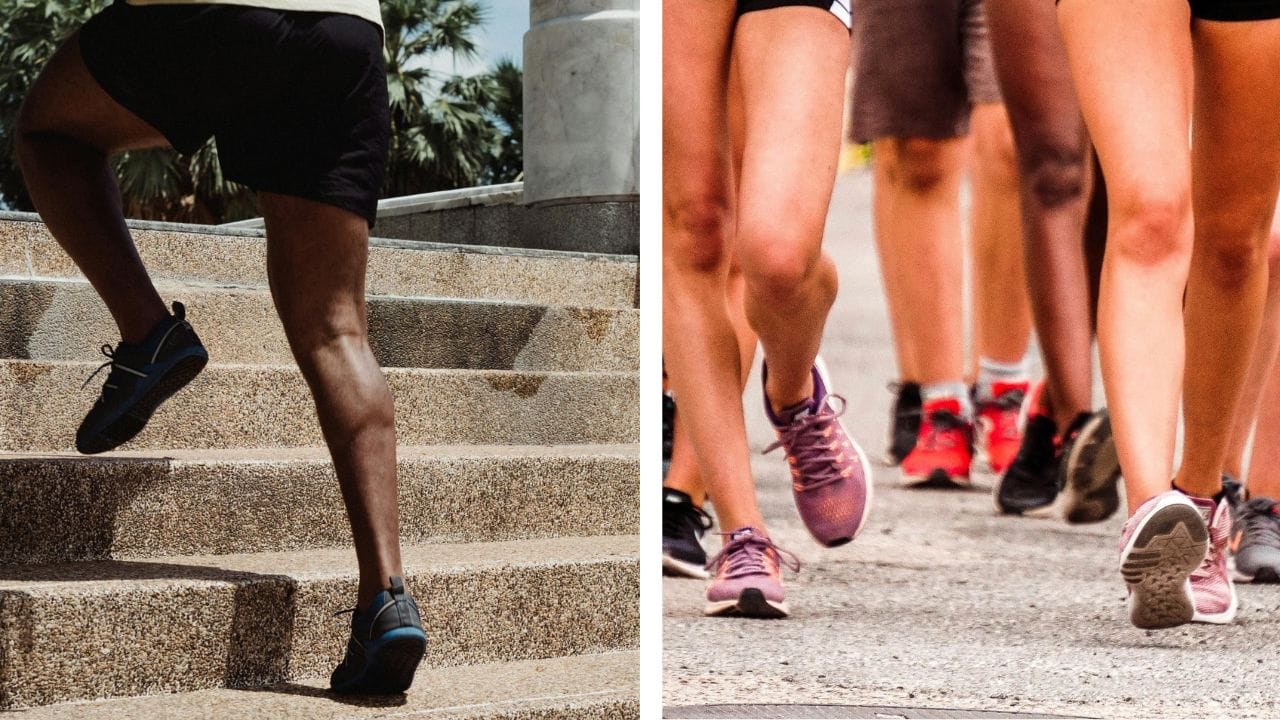Are Barefoot Shoes Suitable for All Activities?

Key Takeaways:
- Barefoot shoes offer numerous benefits, including improved foot strength and natural movement.
- They may not be suitable for all activities, particularly those requiring significant foot protection.
- Understanding the pros and cons of barefoot shoes can help you make an informed decision.
Introduction to Barefoot Shoes
Barefoot shoes have been making waves in the footwear industry, promising a more natural and healthier way to walk, run, and engage in various activities. These minimalist shoes are designed to mimic the feeling of walking barefoot while providing some protection for your feet. But are they suitable for all activities? Let's dive into the world of barefoot shoes and find out.
The Concept Behind Barefoot Shoes
The idea behind barefoot shoes is to allow your feet to move as naturally as possible. Traditional shoes often come with thick soles and arch support, which can restrict the natural movement of your feet. Barefoot shoes, on the other hand, have thin, flexible soles that enable your feet to move freely and strengthen over time.
Benefits of Barefoot Shoes
One of the main benefits of barefoot shoes is improved foot strength. When you wear these shoes, your feet have to work harder to maintain balance and stability, which can lead to stronger muscles and tendons. Additionally, barefoot shoes can help improve your posture and reduce the risk of certain injuries by promoting a more natural gait.
Activities Suitable for Barefoot Shoes
Barefoot shoes are ideal for activities that involve natural movement and minimal impact. Walking, light jogging, and yoga are great examples of activities where barefoot shoes can shine. These activities allow you to take advantage of the natural movement and flexibility that barefoot shoes offer.
Running in Barefoot Shoes
Running in barefoot shoes can be a game-changer for some people. The thin soles encourage a forefoot or midfoot strike, which can reduce the impact on your joints compared to a heel strike. However, transitioning to barefoot running requires time and patience, as your feet and legs need to adapt to the new movement pattern.
Hiking and Barefoot Shoes
Hiking in barefoot shoes can be a mixed bag. On one hand, the shoes allow you to feel the terrain and improve your balance. On the other hand, they offer minimal protection against sharp rocks and rough surfaces. If you plan to hike in barefoot shoes, it's essential to choose trails that are relatively smooth and free of hazards.
Barefoot Shoes for Gym Workouts
Barefoot shoes can be a great choice for gym workouts, especially for activities like weightlifting and bodyweight exercises. The thin soles provide excellent ground feel and stability, which can enhance your performance. However, for activities that involve a lot of jumping or lateral movements, you might want to consider shoes with more cushioning and support.
Barefoot Shoes for Team Sports
Team sports like soccer, basketball, and tennis often require quick movements, sudden stops, and changes in direction. Barefoot shoes may not provide the necessary support and protection for these activities. Traditional sports shoes with appropriate cushioning and ankle support are usually a better choice for team sports.
Barefoot Shoes for Water Activities
Barefoot shoes can be a fantastic option for water activities like paddleboarding, kayaking, and beach walking. The shoes' minimal design allows for excellent water drainage and quick drying. Additionally, they provide a good grip on wet surfaces, reducing the risk of slipping.
Barefoot Shoes for Everyday Wear
Wearing barefoot shoes in your daily life can offer numerous benefits, such as improved foot strength and posture. They are suitable for casual outings, running errands, and even at work if your dress code allows it. However, it's essential to listen to your body and gradually increase the time you spend in barefoot shoes to avoid overuse injuries.
Transitioning to Barefoot Shoes
Transitioning to barefoot shoes is not something you should rush. Your feet and legs need time to adapt to the new movement patterns. Start by wearing barefoot shoes for short periods and gradually increase the duration as your muscles strengthen. Pay attention to any discomfort or pain, and give your body time to adjust.
Potential Drawbacks of Barefoot Shoes
While barefoot shoes offer many benefits, they are not without their drawbacks. The minimal cushioning and support can be a disadvantage for activities that involve high impact or require significant foot protection. Additionally, people with certain foot conditions, such as plantar fasciitis or flat feet, may find barefoot shoes uncomfortable or even painful.
Choosing the Right Barefoot Shoes
When selecting barefoot shoes, it's essential to consider the specific activities you'll be using them for. Look for shoes with a flexible sole, a wide toe box, and minimal cushioning. It's also a good idea to try on several pairs to find the one that fits your feet best and feels the most comfortable.
Barefoot Shoes and Foot Health
Barefoot shoes can have a positive impact on your foot health by promoting natural movement and strengthening your foot muscles. However, it's crucial to listen to your body and make adjustments as needed. If you experience persistent pain or discomfort, it may be a sign that barefoot shoes are not the right choice for you.
Real-Life Experiences with Barefoot Shoes
Many people have shared their positive experiences with barefoot shoes, reporting improved foot strength, better posture, and reduced pain. However, others have found that barefoot shoes are not suitable for their needs, particularly for high-impact activities or those requiring significant foot protection. It's essential to consider your unique circumstances and preferences when deciding whether barefoot shoes are right for you.
Expert Opinions on Barefoot Shoes
Experts in the field of podiatry and sports medicine have varying opinions on barefoot shoes. Some believe that they can offer significant benefits for foot health and performance, while others caution against their use for certain activities. Consulting with a healthcare professional can help you make an informed decision based on your specific needs and goals.
Barefoot Shoes and Children
Barefoot shoes can be a great option for children, as they allow for natural foot development and movement. However, it's essential to ensure that the shoes fit properly and provide adequate protection for their activities. Encouraging children to spend time barefoot or in barefoot shoes can help promote healthy foot development and prevent future issues.
Barefoot Shoes and Older Adults
Older adults can also benefit from barefoot shoes, particularly for activities that involve natural movement and balance. However, it's crucial to consider any existing foot conditions or mobility issues. Gradually transitioning to barefoot shoes and consulting with a healthcare professional can help ensure a safe and comfortable experience.
Barefoot Shoes and Foot Conditions
People with certain foot conditions, such as bunions, hammertoes, or plantar fasciitis, may find barefoot shoes beneficial or problematic, depending on the severity of their condition. It's essential to consult with a healthcare professional to determine whether barefoot shoes are a suitable option for your specific needs.
Barefoot Shoes and Injury Prevention
Barefoot shoes can help prevent certain injuries by promoting natural movement and strengthening foot muscles. However, they may not provide adequate protection for high-impact activities or those requiring significant foot support. It's essential to consider the specific demands of your activities and choose footwear accordingly.
Barefoot Shoes and Performance
For some activities, barefoot shoes can enhance performance by providing better ground feel and stability. However, for activities that involve high impact or require significant foot protection, traditional shoes with appropriate cushioning and support may be a better choice. It's essential to consider the specific demands of your activities and choose footwear accordingly.
Barefoot Shoes and Fashion
Barefoot shoes come in various styles and designs, making it easier to find a pair that suits your taste and lifestyle. From casual sneakers to more formal options, there's a barefoot shoe for every occasion. However, it's essential to prioritize comfort and functionality over fashion when selecting barefoot shoes.
Barefoot Shoes and Sustainability
Many barefoot shoe brands prioritize sustainability, using eco-friendly materials and manufacturing processes. Choosing barefoot shoes from these brands can help reduce your environmental footprint while enjoying the benefits of natural movement and foot health.
Barefoot Shoes and Cost
Barefoot shoes can vary in price, with some high-quality options costing more than traditional shoes. However, investing in a good pair of barefoot shoes can be worthwhile, as they can improve your foot health and overall well-being. It's essential to consider the long-term benefits and choose a pair that fits your budget and needs.
Barefoot Shoes and Customization
Some barefoot shoe brands offer customization options, allowing you to create a pair that fits your unique foot shape and preferences. Custom barefoot shoes can provide a more comfortable and supportive experience, particularly for those with specific foot conditions or needs.
Barefoot Shoes and Community
The barefoot shoe community is growing, with many enthusiasts sharing their experiences and tips online. Joining this community can provide valuable insights and support as you transition to barefoot shoes and explore their benefits. Engaging with others who share your interest can help you stay motivated and informed.
Summary
Barefoot shoes offer numerous benefits, including improved foot strength, natural movement, and better posture. However, they may not be suitable for all activities, particularly those requiring significant foot protection or support.
Understanding the pros and cons of barefoot shoes, along with your unique needs and preferences, can help you make an informed decision. Whether you're aiming to enhance foot health, boost performance, or try something new, barefoot shoes can be a valuable addition to your collection. To explore our selected barefoot shoes, click the link below.

